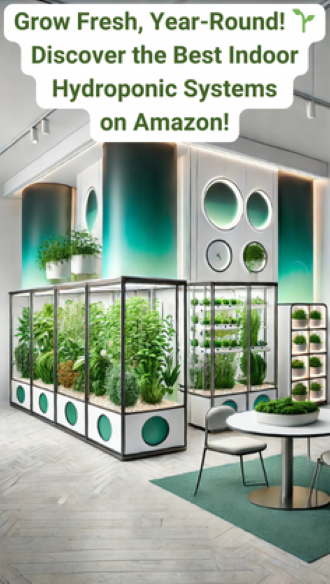
Exploring exotic herbs for hydroponic gardens
Key Takeaways
- Exotic herbs can add unique flavors and aesthetics to your indoor garden.
- Hydroponic systems provide the ideal growing environment for these herbs.
- Regular maintenance and specific nutrient requirements are essential for healthy growth.
- Popular exotic herbs include Thai basil, lemon balm, and Vietnamese coriander.
- Experimenting with different varieties can enhance culinary experiences.
In the world of indoor gardening, the appeal of growing exotic herbs transcends mere aesthetics. These unique herbs not only elevate the flavor of your culinary creations but also contribute to a vibrant and diverse indoor garden. Here, we delve into the top exotic herbs that thrive in hydroponic systems, their growing requirements, and maintenance tips for successful cultivation.
Why choose exotic herbs for hydroponics?
Exotic herbs bring a touch of the unique to your hydroponic garden. Herbs such as Thai basil, lemongrass, and mint not only grow well in hydroponic systems but also offer distinct flavors that can elevate your meals. Moreover, hydroponic methods allow for precise control over growing conditions, which is particularly beneficial for these delicate plants.
Top exotic herbs to consider
| Herb Name | Flavor Profile | Optimal Growing Conditions |
|---|---|---|
| Thai Basil | Slightly sweet with a hint of anise | Warm temperatures; pH level 5.5-6.5 |
| Lemon Balm | Citrusy and lemony flavor | Moderate light; pH level 6.0-7.0 |
| Vietnamese Coriander | Spicy and peppery taste | Warm and humid conditions; pH level 5.5-6.5 |
| Shiso | Minty with a hint of basil | Consistent moisture; pH level 6.0-7.0 |
| Perilla | Earthy flavor, similar to anise | Warm temperatures; pH level 6.0-7.0 |
Growing exotic herbs in hydroponics
Successfully growing exotic herbs in your hydroponic garden involves understanding their specific needs. Each herb has its unique nutritional requirements, light preferences, and humidity levels. Here are some basic tips to guide you along the way:
Tips for beginners
- Monitor nutrient levels: Use a hydroponic nutrient solution tailored for herbs.
- Maintain optimal light conditions: Use full-spectrum LED grow lights to supplement natural light.
- Keep humidity levels steady: Most exotic herbs prefer humidity between 50%-70%.
- Space out plants: Ensure good air circulation around plants to prevent mold.
- Regularly trim and harvest: This encourages bushier growth and maintains plant health.
Common issues in hydroponic herb gardening
Even the most experienced growers encounter challenges. Here's a breakdown of common issues faced in hydroponic herb gardening along with solutions:
| Issue | Possible Causes | Solutions |
|---|---|---|
| Leaf discoloration | Imbalanced pH or nutrient deficiency | Check and adjust pH levels; test nutrient solutions. |
| Pest infestations | Inadequate airflow or hygiene | Improve ventilation; use neem oil for treatment. |
| Slow growth | Insufficient light or nutrients | Increase light duration and verify nutrient levels. |
| Wilting leaves | Over or underwatering | Adjust watering regimen; check the growing medium. |
Conclusion
Growing exotic herbs in hydroponic systems can be a rewarding endeavor, bringing new flavors and diversity to your indoor garden. By understanding the specific requirements of each herb and employing best practices for care and maintenance, you are well on your way to cultivating a thriving exotic herb garden. For more insights on hydroponic gardening, visit our sections on growing techniques, nutrient solutions, and hydroponic kits. Happy gardening!
Pros
- Increased flavor diversity in meals.
- Visually appealing indoor gardens.
- Customizable growing conditions in hydroponics.
Cons
- Requires careful management of nutrients and pH.
- Can be more demanding than traditional gardening.
- May encounter pest issues if not monitored regularly.
